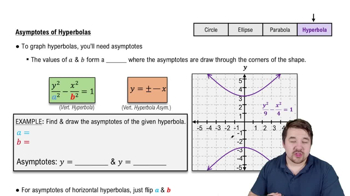16–18. Identities Use the given identity to prove the related identity.
Use the identity cosh 2x = cosh²x + sinh²x to prove the identities cosh²x = (cosh 2x + 1)/2 and sinh²x = (cosh 2x − 1)/2.
 Verified step by step guidance
Verified step by step guidance Verified video answer for a similar problem:
Verified video answer for a similar problem:



 4:50m
4:50mMaster Derivatives of General Exponential Functions with a bite sized video explanation from Patrick
Start learning